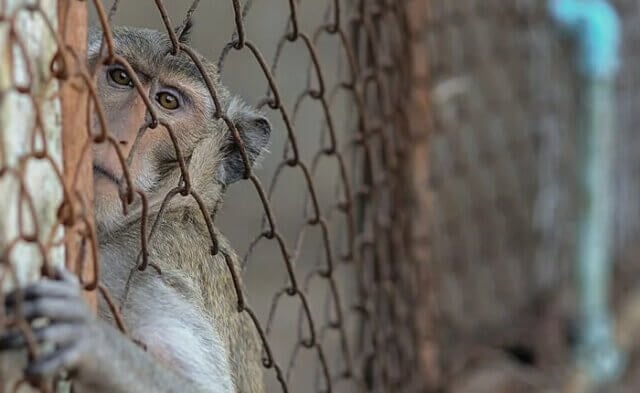Jasper was beyond despair. Locked in a cramped cage for nearly 24 hours, the greyhound felt a desperate need to move around. But all he could do was continue to endure the interminable hours until his handler finally let him out. Jasper’s miserable existence is shared by the thousands of greyhounds still forced to race. But that grim reality will soon be history.
Greyhound racing is done. From dozens of tracks operating around the country just a few years ago, there will be only two left operating by the end of this year. The consensus is overwhelming: The public will no longer tolerate a cruel pastime that causes dogs to suffer terribly.
From the day they’re born, greyhounds destined for the track experience nothing but deprivation. Only “useful” when it’s time to race, greyhounds are warehoused like inventory, spending hours on end in stacked crates in which they can barely move. They are often muzzled. They’re only let out for brief sprints around the track or occasional turn-outs to relieve themselves.
Appallingly, these dogs may be the “lucky” ones.
Countless greyhounds are killed each year when breeders deem them too slow to win races. Dogs have been shot, bludgeoned or simply dumped to fend for themselves. Others face even worse fates.
Officials responding to a complaint about a putrid smell at Florida’s Ebro Greyhound Park found the bodies of dozens of dead and decomposing dogs who had apparently starved to death. Some had duct tape wrapped around their necks. It appears that the owner had intentionally left the greyhounds to die when the racing season ended.
The bodies of 10,000 greyhounds were uncovered in a U.K. field. The “past their prime” but otherwise healthy dogs had been killed with a captive-bolt gun.
A security guard at a Florida track admitted that he had made money for 40 years by shooting injured or aging dogs after 3,000 dead greyhounds were found in a backyard pit on his property.
After the bodies of 124 greyhounds who had been shot or bludgeoned were found buried in the Arizona desert, officials admitted that even if the perpetrator were caught, the only applicable charge they could file would be for “littering.”
The list of greyhound atrocities goes on and on.
Greyhounds don’t fare well on the track, either. Broken legs are common, but other reported injuries include head trauma, other bone fractures and even electrocution when the dogs run into the electrified fence surrounding the track. Although they’re extremely sensitive to temperature because of their lack of body fat and thin coats, greyhounds are forced to race in extreme temperatures—from freezing cold to sweltering heat.
Because greyhounds are raced for just a few years, adoption groups have been working for decades to take in the constant flow of cast-off dogs and place them in homes. But even “saved” greyhounds aren’t always out of harm’s way.
Across the country, hundreds of retired greyhounds are warehoused in “blood banks” so their blood can be drawn, collected and sold to veterinary clinics for use in transfusions. After PETA exposed one such outfit in California—where greyhounds were kept in cramped crates and barren kennels for about 23 hours out of every day—the state governor signed a bill phasing out these obsolete, inhumane closed-colony canine blood banks.
Jasper’s days of languishing in a cage are over, and he found a loving home. But all greyhounds are gentle, personable dogs who deserve a comfortable life. The time for the merciless and mercenary dog-racing industry to be relegated to the history books is long overdue.





